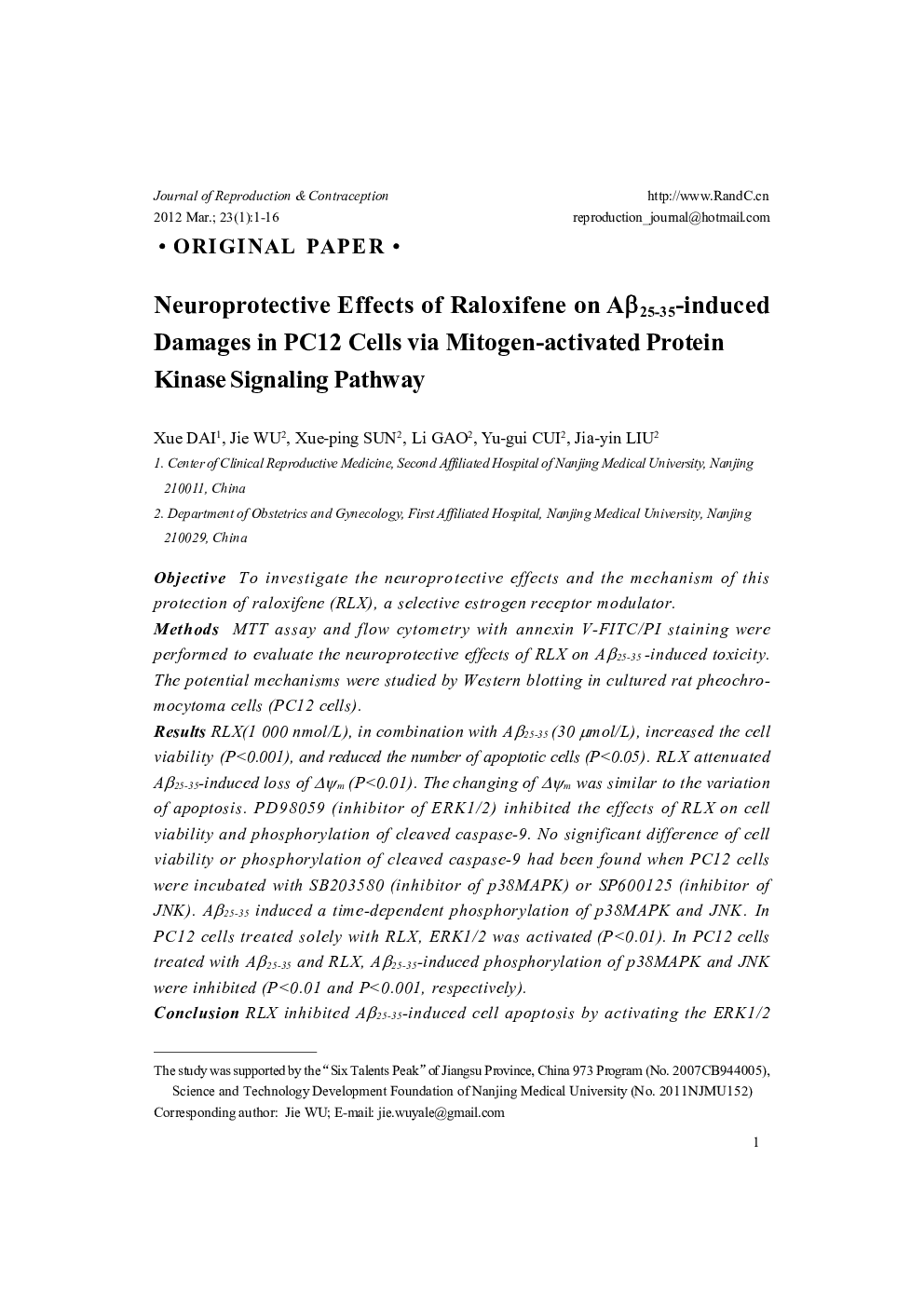| Article ID | Journal | Published Year | Pages | File Type |
|---|---|---|---|---|
| 3963415 | Journal of Reproduction and Contraception | 2012 | 16 Pages |
ObjectiveTo investigate the neuroprotective effects and the mechanism of this protection of raloxifene (RLX), a selective estrogen receptor modulator.MethodsMTT assay and flow cytometry with annexin V-FITC/PI staining were performed to evaluate the neuroprotective effects of RLX on Aβ25-35 -induced toxicity. The potential mechanisms were studied by Western blotting in cultured rat pheochromocytoma cells (PC12 cells).ResultsRLX(1 000 nmol/L), in combination with Aβ25-35 (30 µmol/L), increased the cell viability (P<0.001), and reduced the number of apoptotic cells (P<0.05). RLX attenuated Aβ25-35-induced loss of Δψm (P<0.01). The changing of Δψm was similar to the variation of apoptosis. PD98059 (inhibitor of ERK1/2) inhibited the effects of RLX on cell viability and phosphorylation of cleaved caspase-9. No significant difference of cell viability or phosphorylation of cleaved caspase-9 had been found when PC12 cells were incubated with SB203580 (inhibitor of p38MAPK) or SP600125 (inhibitor of JNK). Aβ25-35 induced a time-dependent phosphorylation of p38MAPK and JNK. In PC12 cells treated solely with RLX, ERK1/2 was activated (P<0.01). In PC12 cells treated with Aβ25-35 and RLX, Aβ25-35-induced phosphorylation of p38MAPK and JNK were inhibited (P<0.01 and P<0.001, respectively).ConclusionsRLX inhibited Aβ25-35-induced cell apoptosis by activating the ERK1/2 pathway in PC12 cells. RLX also attenuated Aβ25-35-induced activation of p38MAPK and JNK. The mitochondria pathway was involved in this inhibitory effect.
